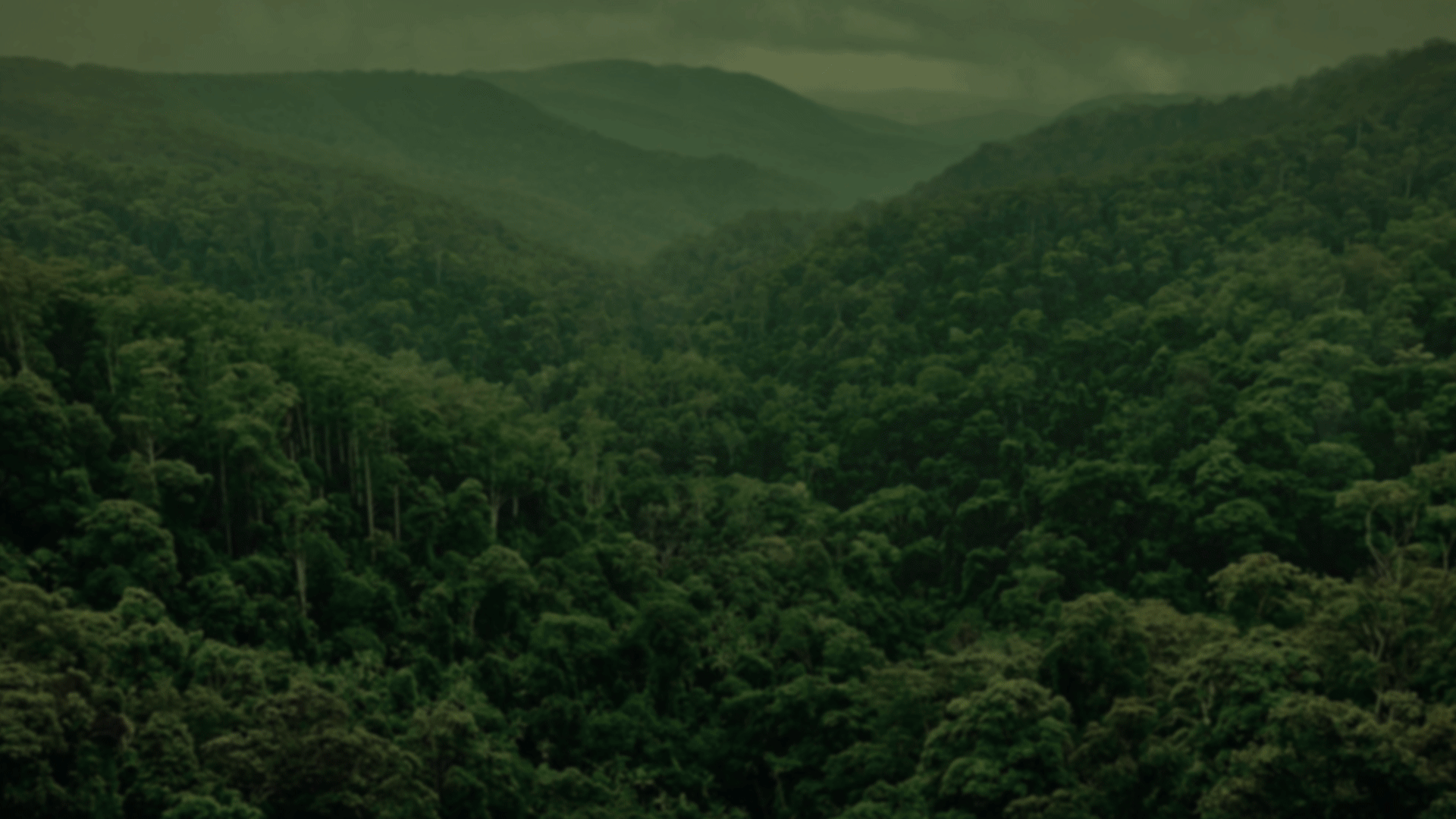sustainability
For Life on Earth
Improving the health of the planet with action, impact, and radical collaboration between AI and experts
Monitoring nature
Protecting the Amazon
Deforestation is threatening the survival of millions of species that make their home in the Amazon rainforest. Project Guacamaya is fighting to preserve the rainforest with AI by looking at daily pictures of Earth taken with satellites, observing animal behavior from within the rainforest with hidden cameras, and listening to forest sounds with tiny microphones. AI helps spot changes to monitor deforestation while identifying images and sounds, allowing scientists to protect biodiversity faster than ever before. Empowered by the AI for Good Lab, the future of the Amazon is changing for the better.
The rhythms of the rainforest
For Life on Earth
Protecting marine life
-
Visions of nature
For Life on EarthThe Natural History Museum London and Microsoft are envisioning what’s possible for the planet in 2125
-
The People Beneath the Waves
For Life on EarthTheir world mirrors ours. What happens to them happens to us. -
Critical Distance
For Life on EarthAn orca calf’s struggle to eat, swim, and live in the face of noise pollution is driving humans to act.
AI is at work for the planet
From the tiniest insect to the biggest ocean wave, each part of nature maintains the delicate balance of our planet, but when this balance is weakened, threats like climate change and animal extinction worsen. Decades of resource- and carbon-intensive practices and habitat disruption have contributed to a need for a more sustainable and ethical way of generating energy, growing food, and protecting nature as a whole. Undoing the damage is a very real challenge, but we’re getting closer to living in a more sustainable world thanks to collaboration and innovation, including rapid advancements with AI.
Around the world, organizations are using Microsoft cloud solutions to build a more sustainable future for all. AI-assisted technologies like Azure IoT, Power BI, and Dynamics 365 are helping them operate more efficiently while conserving and protecting natural resources.
We’ll find out how four different organizations are using AI-driven insights to advance sustainability.
Video carousel
Kilimo, Chile
Smart irrigation
Imagine a lush, organic lemon farm in sunny South America that uses AI to make precise irrigation decisions.
Peace Parks, South Africa
Intelligence in the wild
Growing and maintaining endangered animal populations is challenging, but this wildlife foundation is using AI to conserve populations and protect them from poachers.
Colbún, Chile
Data-driven renewables
By using a mix of water, solar, and wind power, combined with AI prediction models and machine learning, this South American energy company is generating energy more efficiently.
Vattenfall, Sweden
Fossil free society
This European energy giant has the bold vision of a fossil-free society.
Sustainable innovation
Explore stories about AI in culture, community & society
Kilimo, Chile
Smart irrigation
Imagine a lush, organic lemon farm in sunny South America that uses AI to make precise irrigation decisions. Kilimo collects meteorological data, integrates it with satellite imagery, and uses AI for irrigation recommendations. This means crops get just the right amount of water, leading to better yields and more sustainable farming practices.
Once a robust agricultural exporter, Latin America and the Caribbean now face higher production prices, market constraints, and crop challenges related to climate change. Water sustainability is at the center, and climatech company Kilimo is zeroing in.
Kilimo’s irrigation management solution is based on data, AI, and, not least of all, collaboration, enabling farmers to make better decisions about efficient water use without sacrificing production. Kilimo consolidates publicly available meteorological data to calculate local water factors and uses satellites and AI to create a site-specific crop coefficient for each field. The company also provides irrigation recommendations based on a farmer’s real needs. Its platform has helped to save up to 50 billion liters of water in one year.
Because protecting watersheds is key to water and food security, Kilimo is also working to unite environmentally committed companies with farmers in key water basins across Latin America. The organization has committed to save more than 30 million cubic meters of water.
Peace Parks, South Africa
Intelligence in the wild
Growing and maintaining endangered animal populations is challenging, but this wildlife foundation is using AI to conserve populations and protect them from poachers. With AI-powered camera traps and image recognition software, they can quickly identify and respond to threats, promoting the safety of animals in their parks.
For more than four decades, rhinoceroses were absent from Mozambique due to the impacts of civil war. Now Africa’s largest nature conservation initiative, Peace Parks Foundation, boasts the futuristic triumph of a baby rhino born with the help of AI.
Through a collaboration with Mozambique’s National Administration for Conservation Areas, not only has Peace Parks helped to reintroduce black and white rhino to Mozambique’s national parks but to rewild key locations through reproduction and migration. AI-powered image recognition enables Peace Parks to identify threats to rhino populations, where the animals are going, what’s influencing their movement, and even how to counter threats.
Peace Parks unites heads of state to create transboundary landscapes that serve as critical biodiversity corridors. Through long-term co-management agreements, the foundation keeps communities central to decision-making while creating habitats that include, to date, 980,000 square kilometers of transboundary conservation areas including the designation of 113,000 square kilometers of new protected areas. The organization has relocated more than 18,000 animals representing 27 species, resulting in an estimated head count of more than 100,000 animals, based on population growth models benchmarked by aerial surveys.
Colbún, Chile
Data-driven renewables
By using a mix of water, solar, and wind power, combined with AI prediction models and machine learning, this South American energy company is generating energy more efficiently. This not only optimizes their energy production but also contributes to a more sustainable future. Plus, their pilot program with Microsoft Copilot is helping boost employee productivity.
Reliable operations are just one piece of sustainable energy transformation for Chilean energy provider Colbún. Colbún operates a diverse mix of renewable energy assets, using AI technology to enhance efficiency through prediction models for wind and sun energy, intelligent insights about maintenance issues, and various applications for machine learning.
With Chile’s landmark goal of basing 70% of its energy consumption on renewables by 2030 and becoming carbon neutral by 2050, Colbún also invests deeply in community involvement. The company collaborates directly with customers, workers, shareholders, communities, and suppliers, building trust through transparency and dialogue about concerns and visions.
Colbún also seeks to generate sustainable value that can be shared through an array of local projects. These range from hydro-tourism, showing communities how energy projects can add value to the community, to an entrepreneurship center that fosters innovative business through pre-incubation programs, public and private funding, and training.
Vattenfall, Sweden
Fossil free society
This European energy giant has the bold vision of a fossil-free society. They’re using AI to match energy consumption with renewable energy production on an hourly basis. This innovative approach ensures a continuous supply of 100% renewable energy, making their dream of fossil-free living possible within one generation.
For more than 100 years, the Swedish energy company Vattenfall has electrified industries, energized homes, and supported modern living through innovation and cooperation. Now the company is helping to usher Europe to fossil freedom.
To reach net-zero carbon emissions by 2040, Vattenfall needs to reduce its CO2 emissions for its own operations, its suppliers, and its customers—reducing carbon emissions throughout its entire value chain.* It’s getting there by working with customers, partners, authorities, and cities, and with climate science as its guide. The company has already phased out lignite and will phase out hard coal by 2030.
Vattenfall’s approach to sustainability seeks to balance environmental, social, and economic aspects. This means that tackling climate change by safeguarding resource efficiency must be done in a fair way. Because new wind production and grid systems that connect industries also impact people, Vattenfall has lots of interaction with local communities.
Co-innovation also plays a role. In 2019, Vattenfall and Microsoft developed a first-of-its-kind solution providing customers a new level of transparency into their electricity consumption, enabling them to track their energy consumption based on hourly data from source of origin. The 24/7 solution is built with Microsoft Azure IoT Central platform, connecting energy generation such as wind and hydro power from Vattenfall with data from smart meters that measure the consumption in real-time.












